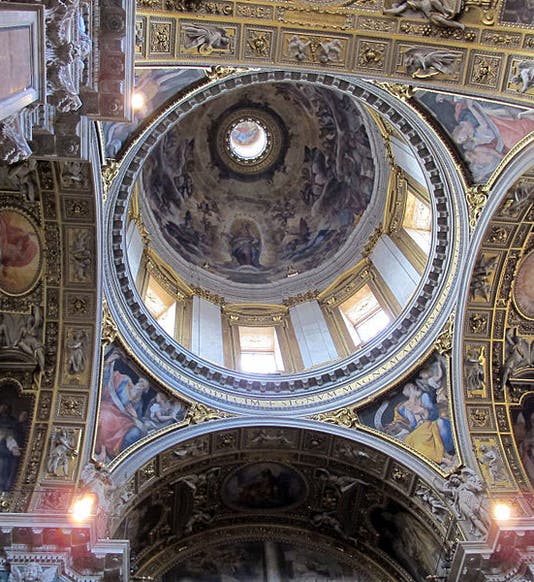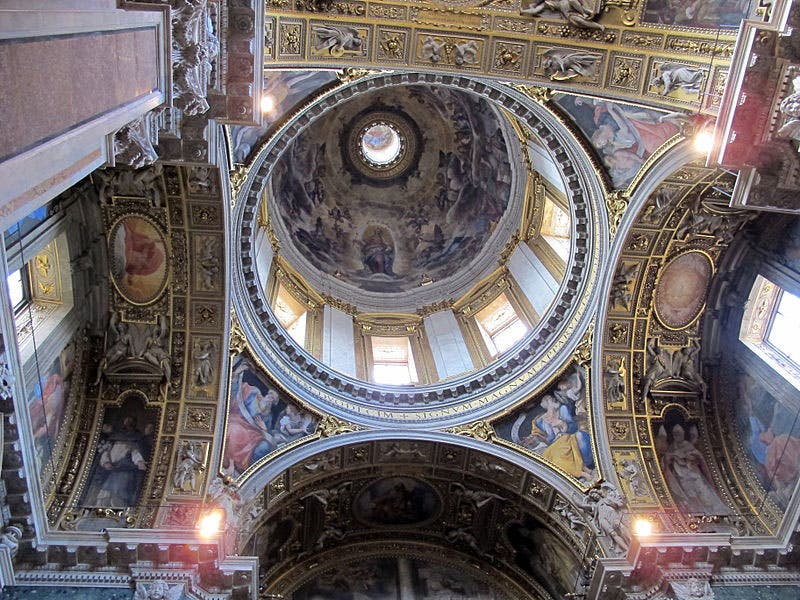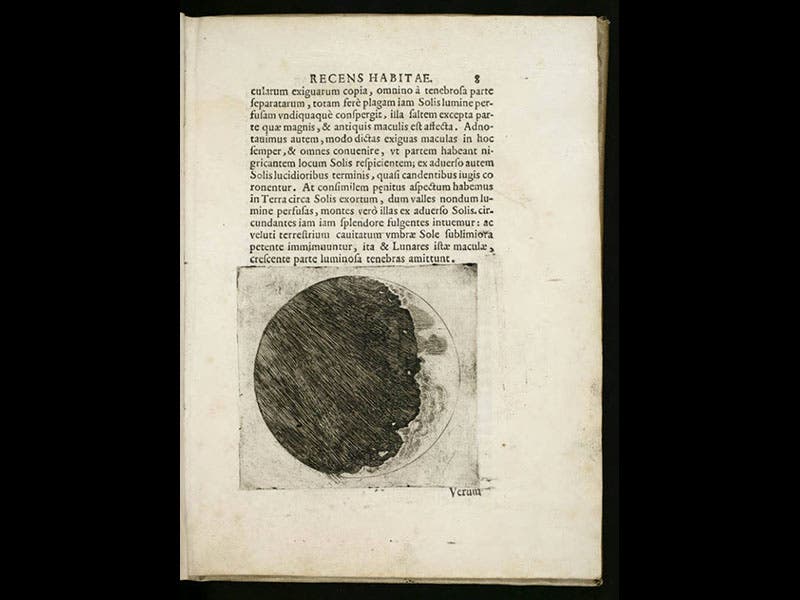Scientist of the Day - Lodovico Cigoli
Lodovico Cardi, an Italian painter usually known as Cigoli, was born Sep. 12, 1559 (see self-portrait, second image). Cigoli was a good friend of Galileo Galilei, both being members of the Accademia del Disegno, the artists’ guild in Florence. One of Cigoli's last commissions (in 1612, the year before his death) was to paint the dome of the Pauline Chapel in the church of Santa Maria Maggiore in Rome (first image). In this long view, one can see a small figure, just above the bottom rim of the dome. That scene depicts the Assumption of the Virgin, a common theme in Italian Baroque art, where Mary is shown being escorted bodily into heaven by a host of angels. Often, in paintings of the Assumption, the Virgin was depicted standing on the Moon, since the Moon, like Mary, was an immaculate celestial body. Or so it was thought to be until November of 1609, when Galileo turned his telescope on the Moon and discovered that the lunar surface was "maculata"--covered with spots, which Galileo saw as craters (fifth image).
Cigoli knew all about this recent revelation, so while he accorded with tradition and drew his Pauline Virgin standing on the Moon, it was not a pure moon that he painted, but rather a Galilean moon, pockmarked with craters (third image). In a close-up of Cigoli’s Virgin (fourth image), the cratered moon is evident. It is hard to know what Church authorities thought about this. They were probably just grateful that the blemished moon was tucked away at the side of a lofty dome and difficult to see from the floor of the chapel. Thankfully, they left it alone, so one can still see this wonderful example of art reflecting scientific novelties, if one knows where to look.
Dr. William B. Ashworth, Jr., Consultant for the History of Science, Linda Hall Library and Associate Professor, Department of History, University of Missouri-Kansas City. Comments or corrections are welcome; please direct to ashworthw@umkc.edu.











